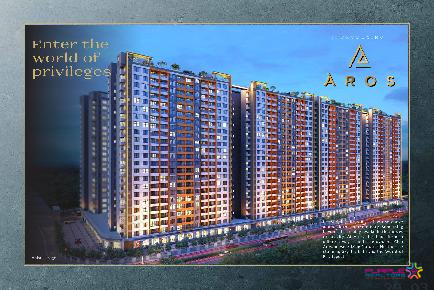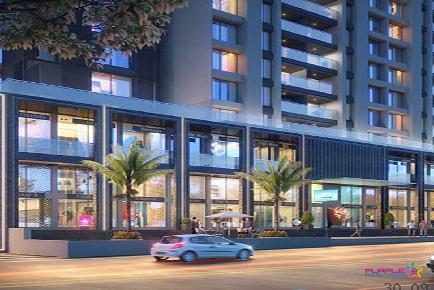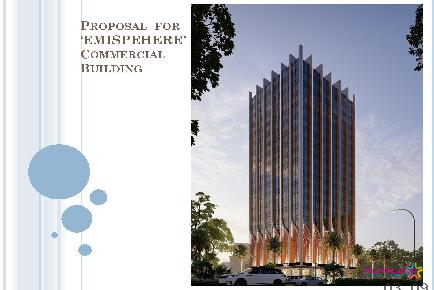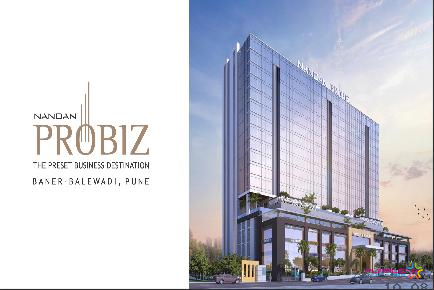
The Cullinan by Garve Pimple Nilakh Pune Commercial Project Floor Plan Review
Pimple Nilakh,Pune
Urbanisation and housing reveal a nation’s economic growth and social wellbeing. India’s urban population is growing at an average 2.1% every year since 2015. It is likely to reach 60 crore by 2031 (up from 37.7 crore today). But the growth in housing has been unable to keep pace. Currently, the housing shortage in India is close to 1.9 crore units. The economically weaker sections (EWSs) and lower-income groups (LIGs) account for 96% of the urban shortage.
Government thrust on affordable housing
The Government of India has recognised the need to fill the gap in urban housing. Large-scale housing projects that are affordable are sure to help. So, the government announced an ambitious project. It seeks to provide ‘Housing for All by 2020’. It has taken many initiatives to make this a reality. For example, it facilitated a 4% interest rate rebate on housing loans of up to Rs 9 lakh. The rebate stands at 3% on loans up to Rs 12 lakh.
Besides, the government granted infrastructure status to affordable housing. Developers can enjoy cheaper sources of funding, including external commercial borrowings (ECBs). Affordable housing promoters will also get more time for project completion. The deadline will increase to five years, up from the current three years.
Developers will also get a year’s time to pay tax on notional rental income on completed but unsold units. The tenure for long-term capital gains for affordable housing has come down too. The new tenure is two years, as against the earlier three.
Change in developer psyche
The spate of initiatives has given a shot in the arm to developers. The segment had been languishing on account of luxury and premium housing for the last few years. Demonetisation dealt a severe blow as well. But affordable housing has generated a new source of revenue. It also boosted the confidence and goodwill of real estate developers. Many private players are now undertaking affordable projects.
This is a move away from the year 2009 (post the global economic crisis). Back then, developers had no choice but to turn to cheaper housing. The reasons were a severe liquidity crunch and muted demand. The aftermath of the crisis led to the emergence of the concept of ‘ affordable housing ’. But affordable housing projects had their own set of challenges. These included the lack of land and high construction costs. There was also an unfavourable tax environment. The government’s focus on affordable housing is removing those bottlenecks.
Attractive home loan offers for borrowers
The availability of cheap finance is driving demand as well. The home loan market in India consists of 76 lenders. These include state-run banks, private banks, and housing finance companies (HFCs). All these are trying to woo customers.
New entrants are crowding the space, but HFCs are dominating it. They continue to score over their traditional banking counterparts. How? HFCs are focussing on middle-class and aspiring lower-middle-class borrowers. They lend to people with an annual income that ranges from Rs 2 lakh to Rs 10 lakh.
Leading HFCs are now offering tailor-made affordable housing schemes at 8.5–9%. Borrowers can get a higher loan-to-value (LTV) ratio as well. They can avail up to 85% for housing units that are ready or nearing completion. A traditional bank would offer only 80–85%. Besides, the products of HFCs are more accessible to the self-employed. This includes professionals and small businessmen. Such individuals find it difficult to get credit from a traditional lender.
The demand for low-cost homes should continue over the next decade. The sustained focus of the government and the tailor-made schemes of HFCs are likely to help. All things considered, the target of housing for all by 2022 seems like an achievable target.

Aros at Life Republic by Kolte Patil Marunji HInjewadi Pune
Hinjewadi, Pune

The Light by Majestique Balewadi Pune 3 BHK 4 BHK
Balewadi, Pune

The Cullinan by Garve Pimple Nilakh Pune Commercial Project Floor Plan Review
Pimple Nilakh,Pune

Pride Gateway Baner Pune Commercial Project
Baner,Pune

Amar Summit Shivaji Nagar Pune Commercial Office Spaces Price Location Floor Plan
Shivajinagar,Pune

Mont Vert Montclaire Baner Pune Commercial Projects Office Spaces Available For Sale and Lease
Baner,Pune

Emispehere Balewadi Pune Commercial Project
Balewadi,Pune

Nandan PROBIZ Balewadi Pune Commercial Project
Balewadi,Pune

Phoenix Millenium Towers Wakad Pune Commercial Office Space
Wakad,Pune

Haute Capital by Bhansali Baner Pune Commercial Project
Balewadi,Pune

SURATWALA MARK PLAZZO HINJEWADI COMMERCIAL OFFICE SPACE SHOP SHOWROOM
Hinjewadi,Pune

57 Avenue Wakad Pune Commercial Project
Wakad,Pune